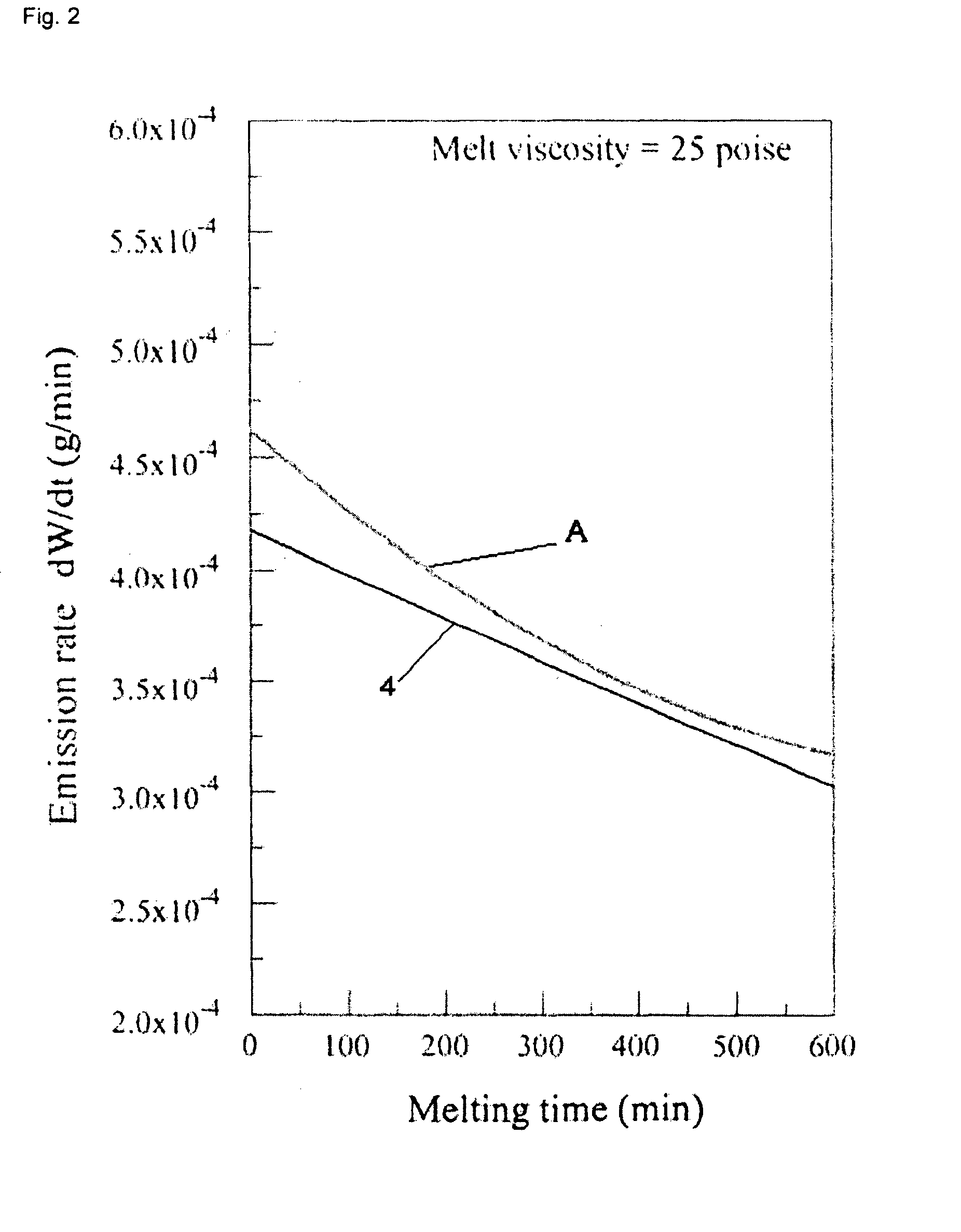Glass compositions, glass fibers, and methods of inhibiting boron volatization from glass compositions
a glass composition and glass fiber technology, applied in the field of glass compositions, can solve the problems of undesirable volatilization of boron from such bsub>2/sub>osub>3/sub>-containing fiberizable glass compositions during processing, and sometimes installed cost-effective emission control systems to reduce or control boron emissions from equipmen
- Summary
- Abstract
- Description
- Claims
- Application Information
AI Technical Summary
Benefits of technology
Problems solved by technology
Method used
Image
Examples
example 1
[0204]Four glass batches having example glass compositions 1-4, respectively, given below in Table 2 and one glass batch having the comparative example glass composition “A” set forth in Table 2 were prepared as follows. Regent grade, oxide powders were blended as indicated in Table 2 to form the desired composition. After blending, each glass batch composition was heated to approximately 1450° C. in a platinum-10% rhenium crucible for about 4 hours to melt the glass composition. Thereafter, a “button” of each glass composition was then prepared by pouring the molten glass from the crucible into a stainless steel mold, which was subsequently placed into an oven at 750° C. for 3 hours. The power was then turned off to the oven and the glass was permitted to cool to room temperature in the oven overnight to allow the glass to anneal. The composition of the glass buttons is expected to be similar to that of the glass batch compositions, except for the loss of B2O3 during melting. As di...
example 2
[0210]A glass batch having the example glass composition 4 set forth in Table 2 was prepared as discussed above in Example 1 along with a glass batch having the comparative example glass composition A. The weight loss as a function of time for each glass composition was then determined using TGA. Three 50.0 gram samples of each glass composition were individually tested. The TGA unit comprised a platinum-20% rhodium alloy crucible and suspension rod hanging inside a furnace. The suspension rod was connected to a digital balance outside the furnace having a precisions of 0.001 grams and weight changes measurements as function of time were automatically recorded every 30 seconds. The samples were heated to a temperature sufficient to achieve a melt viscosity of approximately 25 poise (which corresponded to a temperature of about 1470° C. for both glass compositions). After reaching the desired viscosity, the samples were held at that temperature for a period of 600 minutes. From the d...
example 3
[0212]A glass batch having the example glass composition 1 set forth in Table 2 was prepared as discussed above in Example 1 along with a glass batch having the comparative example glass composition A. Samples of each glass batch were then tested using TGA as described above in Example 2, however, a melt viscosity of approximately 35 poise (corresponded to a temperature of approximately 1447° C. for the example glass composition 1 and a temperature of approximately 1488° C. for the comparative example glass composition A) was used. As shown in FIG. 3, the glass composition according to the present invention (i.e., example glass composition 1) had a lower boron emission rate than comparative example glass composition A.
PUM
| Property | Measurement | Unit |
|---|---|---|
| molar ratio | aaaaa | aaaaa |
| log3 forming temperature | aaaaa | aaaaa |
| liquidus temperature | aaaaa | aaaaa |
Abstract
Description
Claims
Application Information
 Login to View More
Login to View More - Generate Ideas
- Intellectual Property
- Life Sciences
- Materials
- Tech Scout
- Unparalleled Data Quality
- Higher Quality Content
- 60% Fewer Hallucinations
Browse by: Latest US Patents, China's latest patents, Technical Efficacy Thesaurus, Application Domain, Technology Topic, Popular Technical Reports.
© 2025 PatSnap. All rights reserved.Legal|Privacy policy|Modern Slavery Act Transparency Statement|Sitemap|About US| Contact US: help@patsnap.com



